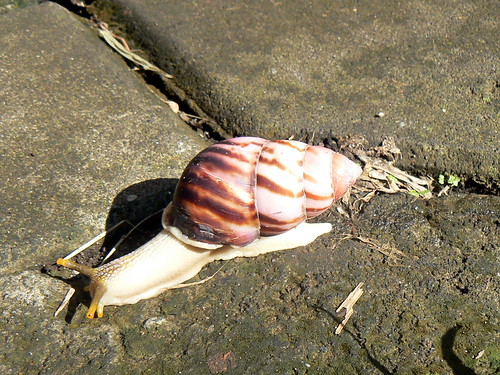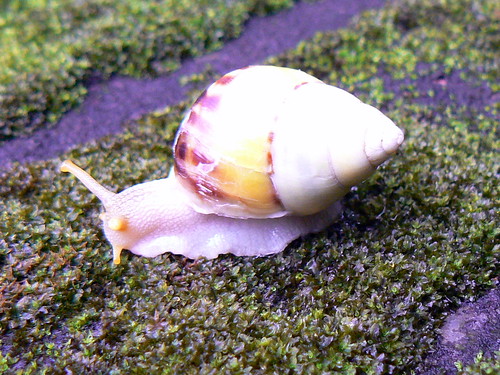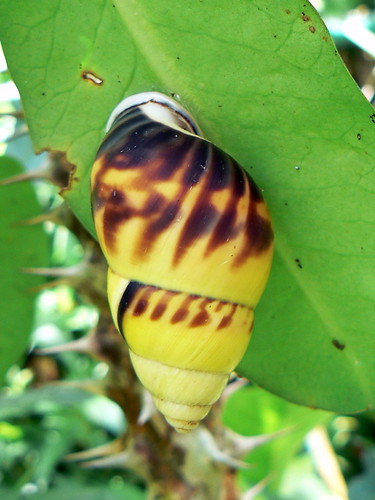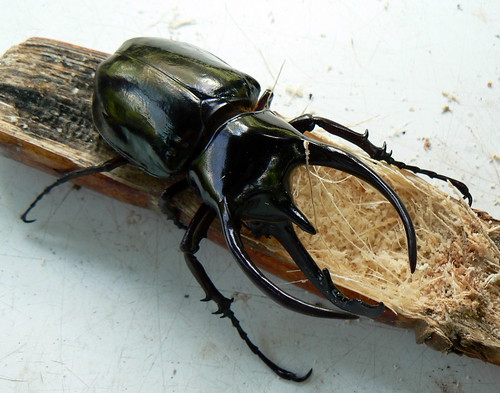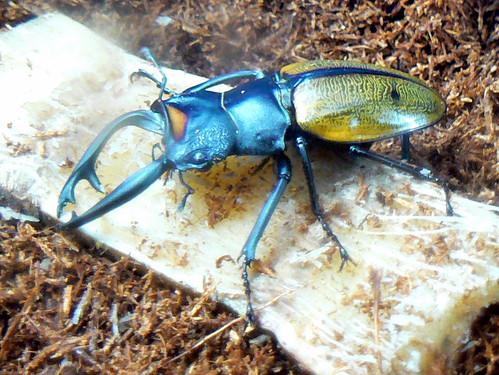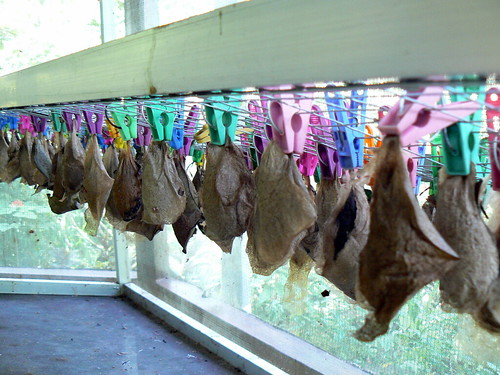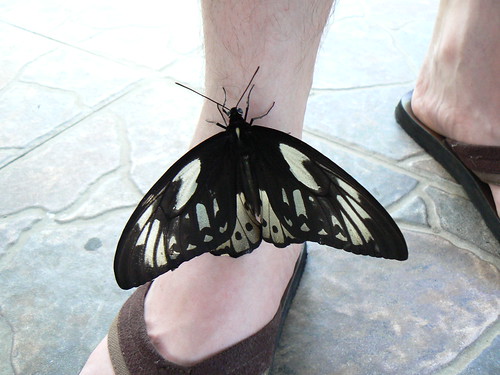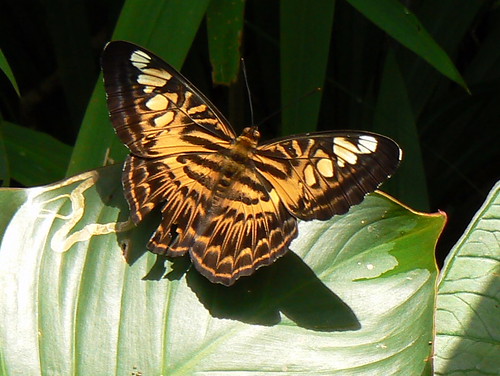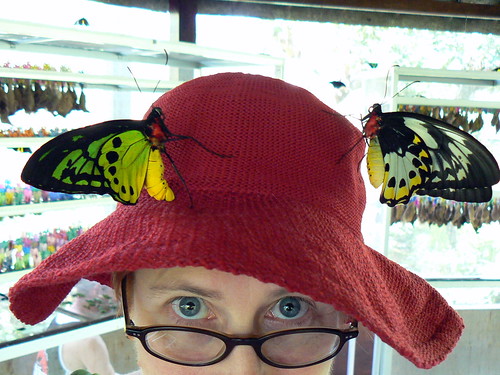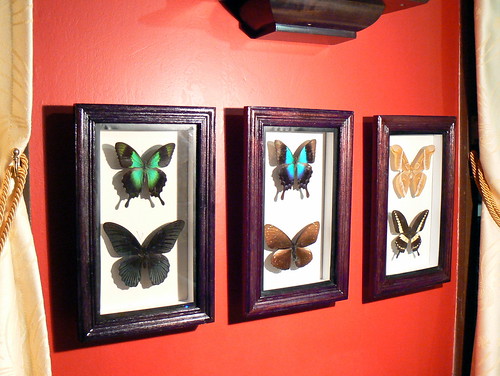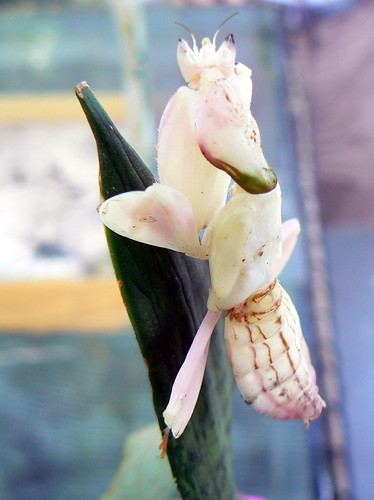 |
| Map from National Parks and Wildlife Service |
Its location, topography and perimeter present major ecological impacts on the park, specifically storm-water run-off from residences and weed invasion.
A key feature of natural Sydney vegetation is that it is largely adapted to soils derived from ancient sandstone, notoriously low in nutrients--particularly phosphorus. While seeds of invasive plant species evolved in high nutrient environments are likely found in all urban Sydney bushland, they generally cannot develop to maturity where nutrient levels are poor. Where run-off occurs, however, nutrients from human activity fertilise the soil and weeds can thrive. That's why weeds are more likely to be found near suburban bushland creeks than in the bush beyond. In addition, cuttings and seeds from weeds can be washed into the area, to propagate and invade. Weeds can then out-compete native plant species and destroy habitat and food sources of native fauna.
Sugarloaf Point is a region in the park that was once a thriving saltmarsh ecosystem. In 1940, 1.2 ha of the Point (below) were mangrove swamp, and 0.2 ha were saltmarsh.
 |
| Sugarloaf Point in 1940. Image © NSW Dept of Lands 2011. |
Midway through last century, the river was dredged to improve boat access, and the excavated silt deposited onto the salt marshes.
 |
| Sugarloaf Point in the 1969s, at the height of dredging operations. Photo courtesy of National Parks and Wildlife. |
 |
| Casuarinas now growing on the site where the dredged silt was dumped. |
Saltmarsh ecosystems provide a crucial role in coastal estuarine systems. They provide habitat for a range of molluscs and crustaceans, and act as nurseries for species that find their way into harbours. Microbats feast nocturnally on the high insect populations they support. And marshes recycle nutrients to make them available to other species. These environments are filled with water at high tide, and completely washed out during king tides. At king tides, fish enter to feed on the abundant prey available there.
 |
| National Parks ranger, Andrew Duffy, shows plant ecology staff and students a coastal saltmarsh at Lane Cove National Park. The bridge is part of the Great North Walk, stretching from central Sydney to Newcastle, 250 kilometres north. |
 |
| Sarconornia quinqueflora is a key species in Australian coastal saltmarsh. |
In New South Wales, coastal saltmarsh is listed as an endangered ecological community under the Threatened Species Conservation Act 1995. Frequently associated with this saltmarsh in saline wetlands are mangrove swamps, which provide habitat to a range of endangered and threatened species of flora and fauna, including the critically endangered Beach Stone-Curlew, Esacus neglectus.
 |
| Beach Stone-Curlew. Image CC, Avicida |
 |
| Mangrove swamp, Lane Cove National Park. |
Given the vulnerability to disturbance and pollution in Lane Cove National Park, one might imagine that its saltmarshes don't have a hope in Hades. However, thanks to the work of the National Parks and Wildlife Service, its local ranger, Andrew Duffy, and groups like Friends of Lane Cove National Park, extraordinary saltmarsh restoration is taking place there.
 |
| Saltmarsh restoration at Lane Cove NP. |
This photo shows the work done thus far on the re-creation of a saltmarsh in the park. The soil has been removed to make the site low enough to be thoroughly inundated twice a month, with the gradient calculated to keep the water at an appropriate level across the site. Volunteers have planted tubestock of the signature species, including Suaeda australis, Tecticornia arbuscula, Juncus kraussii and Isolepis nodosa (Knobby Club-Rush, one of my favourite monocots, and not just because of its common name!)
Creating physical conditions is only part of the story. There's also chemistry. The environment needs to be kept free of the pollution that encourages weeds. To this end, nutrient traps have been created to decrease harm from storm water from adjacent residential areas. Below is a gross pollutant trap, which collects leaf litter and rubbish. The content from the trap is removed and disposed of off-site.
 |
| Gross pollutant trap. |
More particulate pollutants need a finer trap, so crushed sandstone storm-water treatment traps have been set up, immediately adjacent to the nearby major road.
 |
| Crushed sandstone storm-water treatment trap, immediately adjacent to Pittwater Road. |
The crushed sandstone is obtained from construction sites in the Sydney area, and makes an ideal medium to suppress weeds and provide suitable substrate for native plants. It is placed on terraces constructed across the embankment. Beneath the trap is a settlement pond, where escaped nutrients settle and are physically removed with an excavator when around five tonnes of sediment have accumulated.
One of the predictions of climate change, already observed, is rising ocean water levels which will obviously have an effect on both saltmarsh and mangrove ecological communities. To this end, thought is being given to planning the restoration of these ecosystems at slightly higher altitudes. Water levels are not the only issue these communities must contend with, however. There is a strong inverse relationship between saltmarsh diversity and temperature in Australia, which does not bode well. (See link below for more.)
Thanks to Dr Michelle Leishman of Macquarie University's Department of Biological Sciences and to NPWS Ranger, Andrew Duffy, for introducing me to his magnificent habitat and restoration work. If I were a rich woman (ya ha didle deedle, didle deedle didle deedle dum) I'd donate to this cause in a heartbeat.
Further reading:
Coastal saltmarsh in the NSW North Coast, Sydney Basin and South East Corner bioregions - endangered ecological community listing
Protecting and Restoring Coastal Saltmarsh
Coastal saltmarsh vulnerability to climate change in SE Australia
[Edit: Thanks to Doug Beckers for his correction of the ID of Sarcocornia quinqueflora!]















